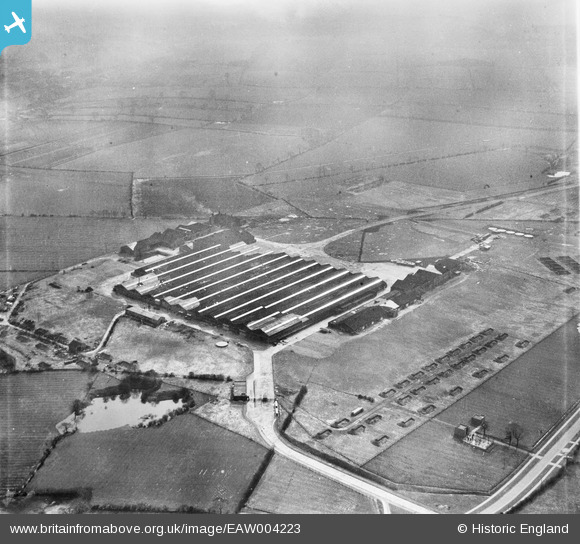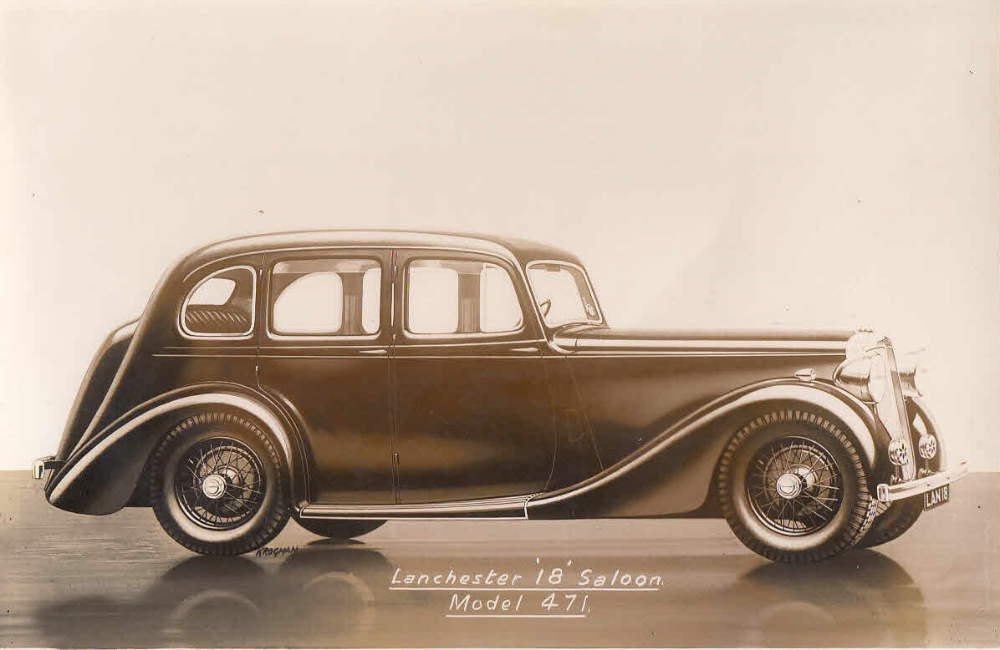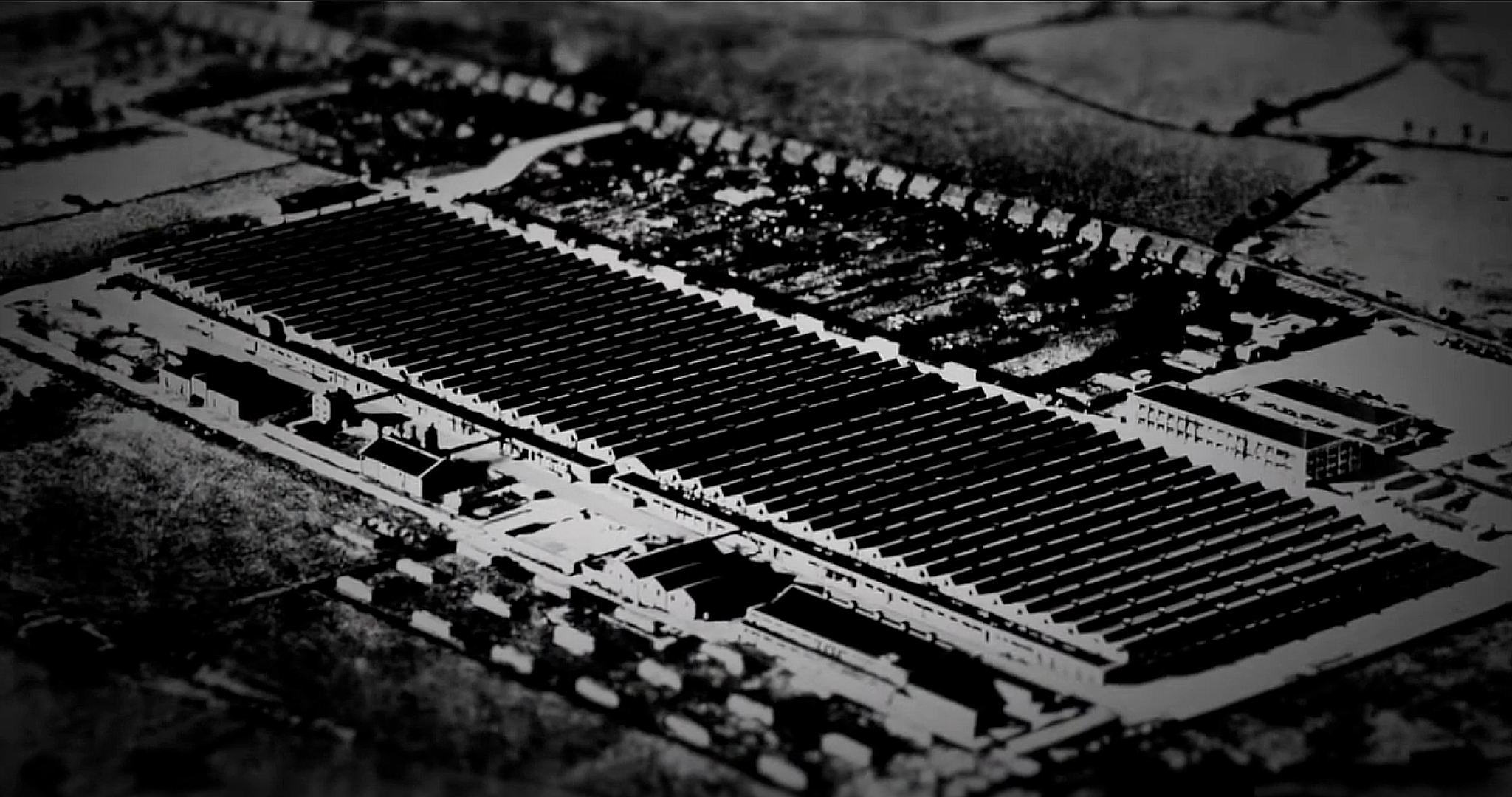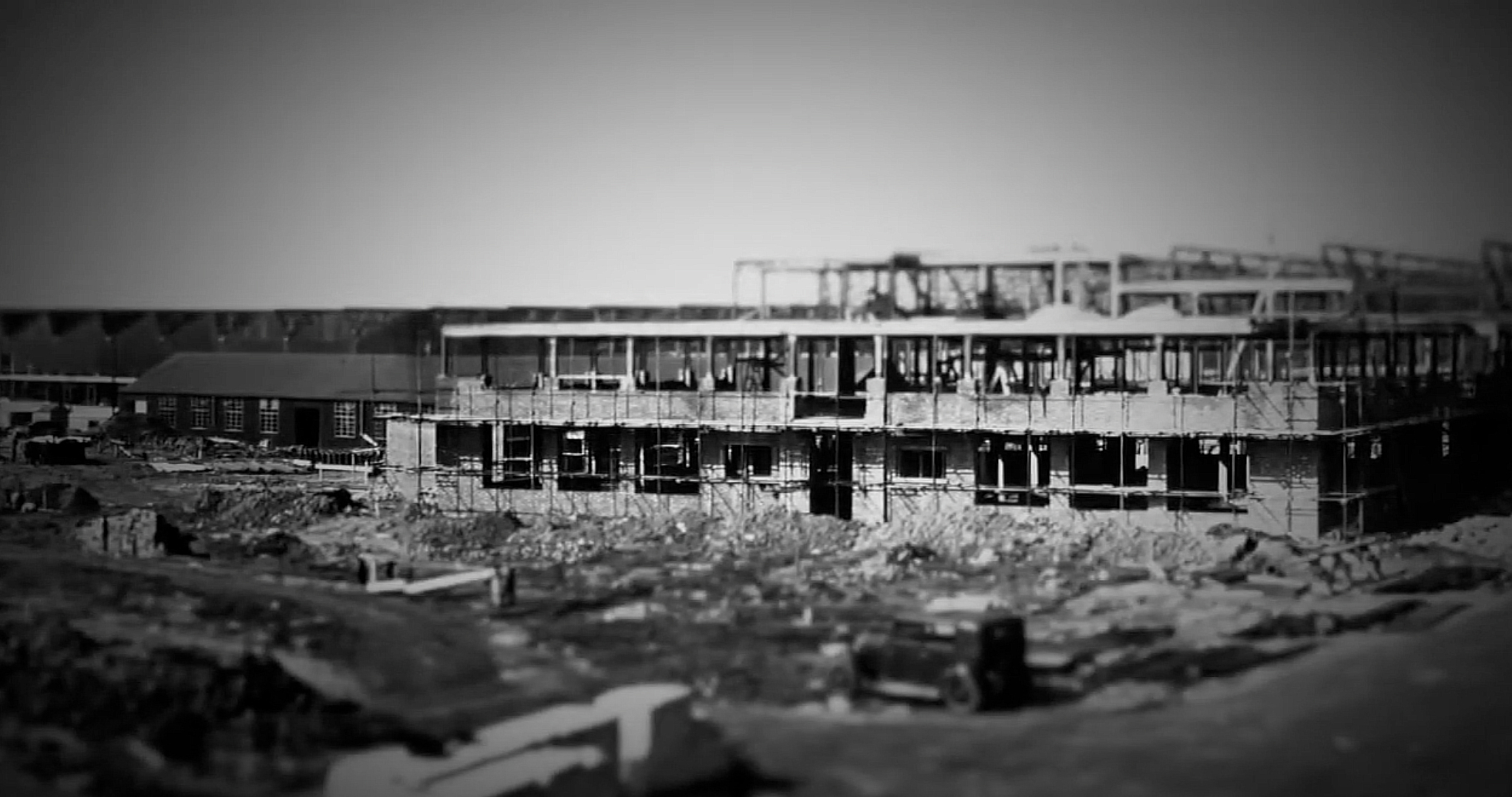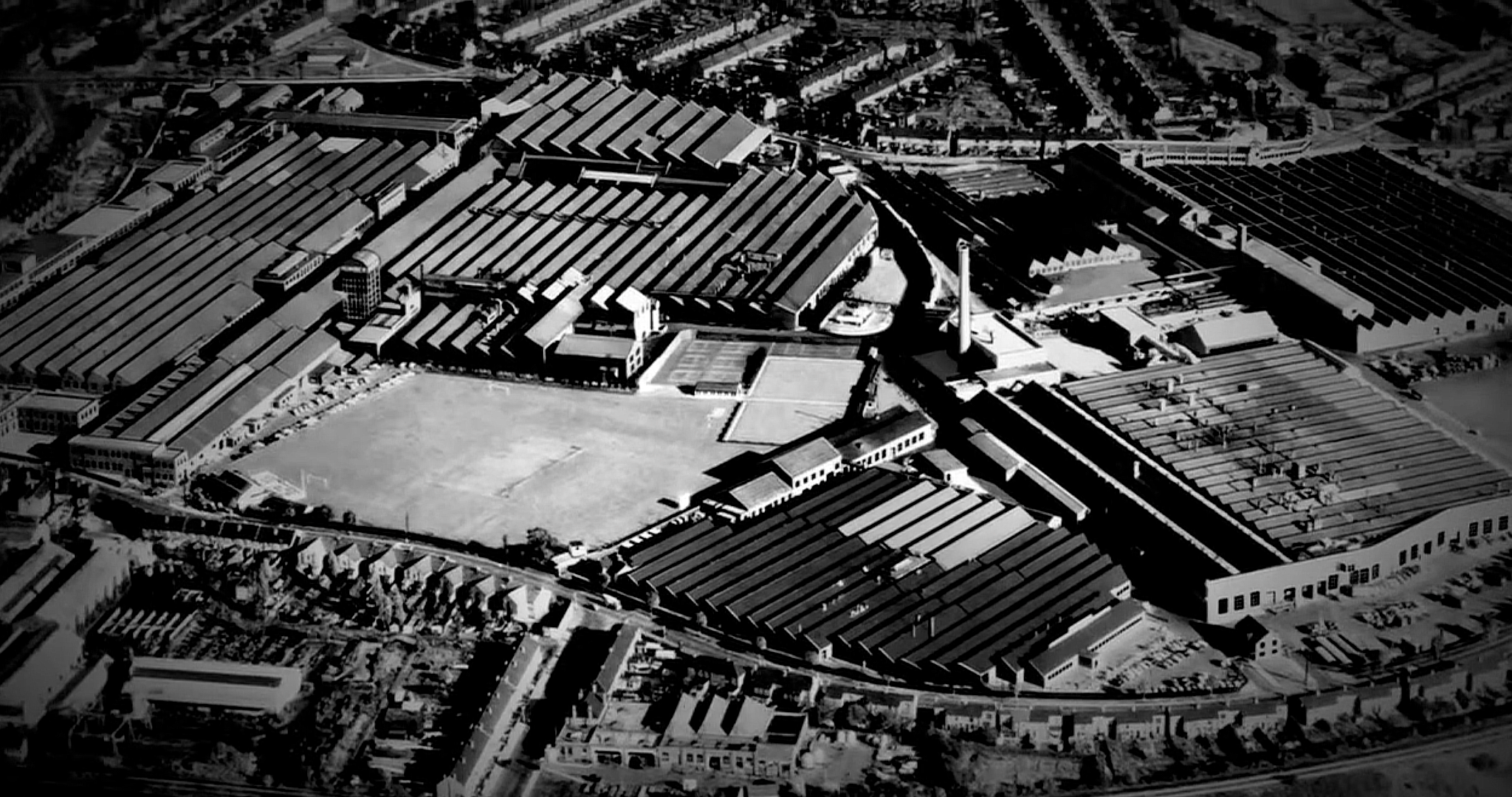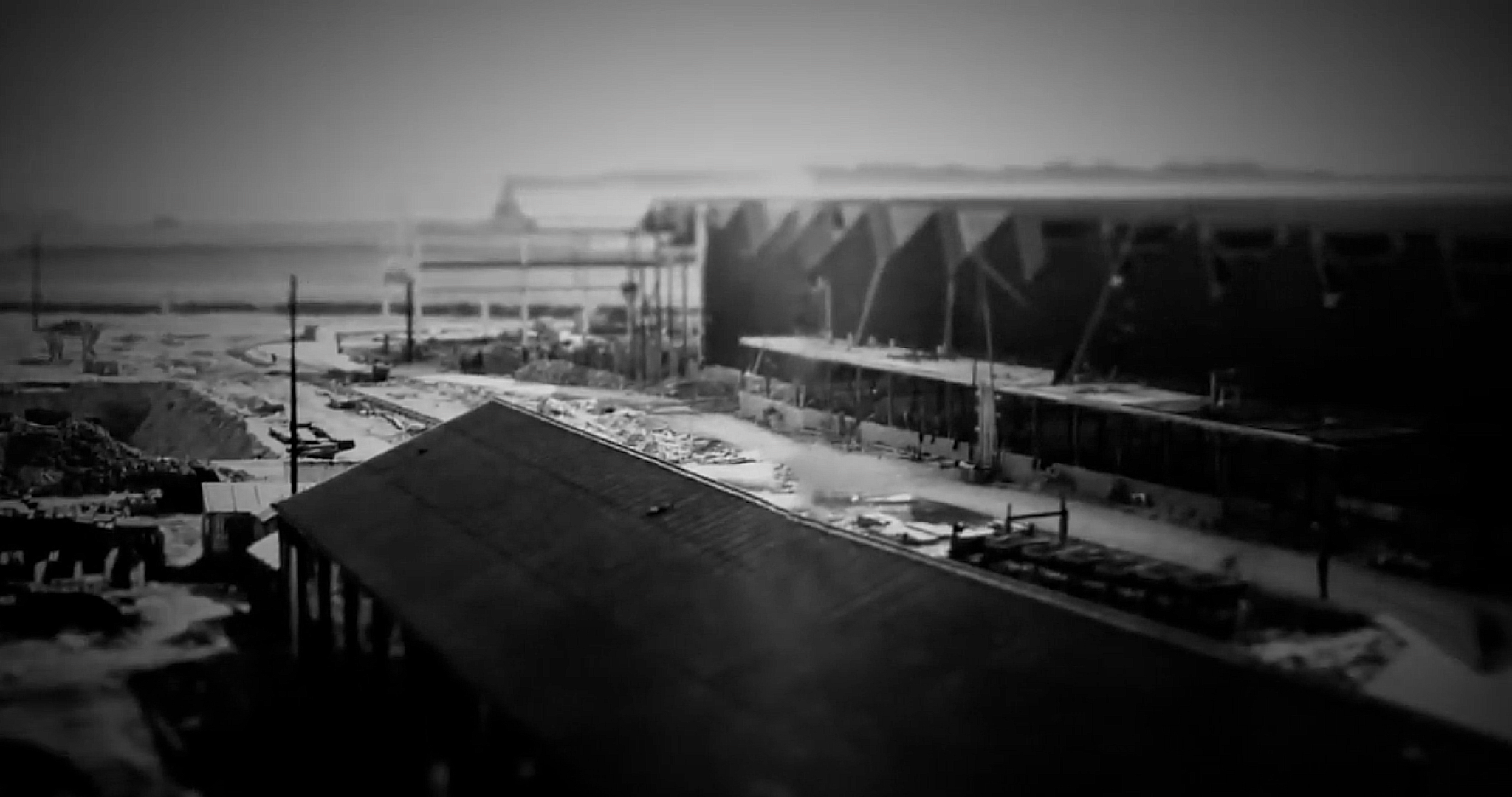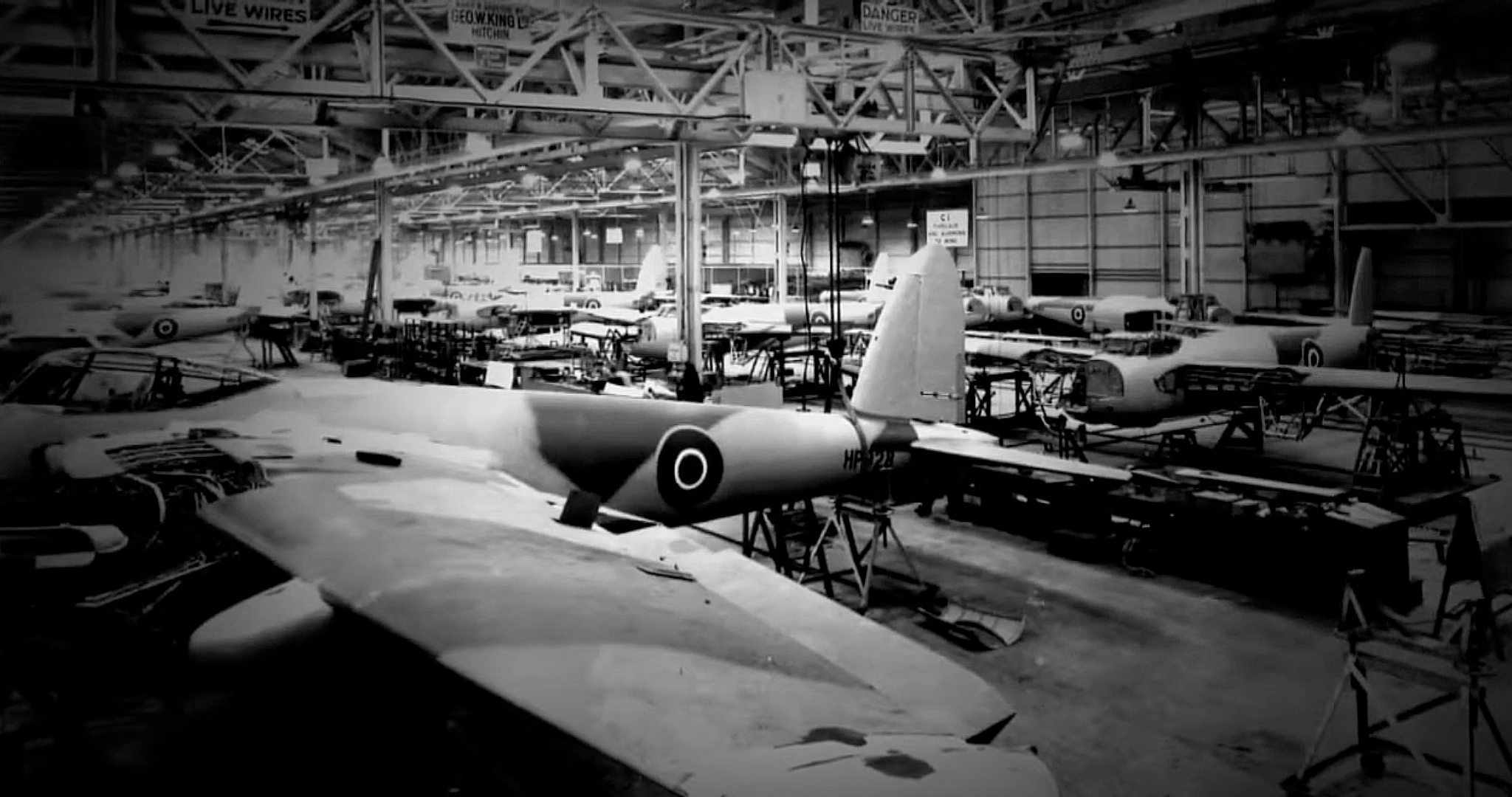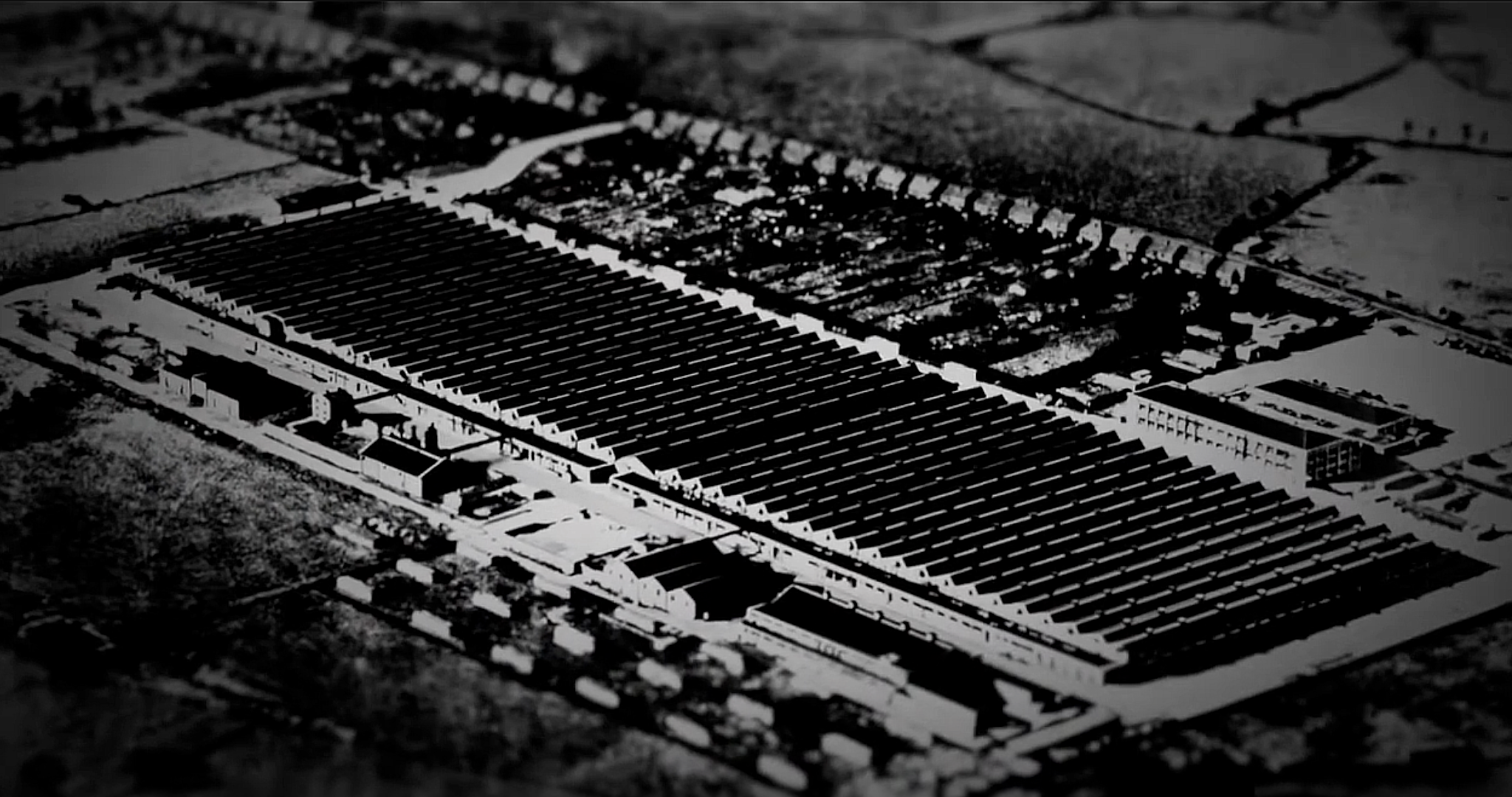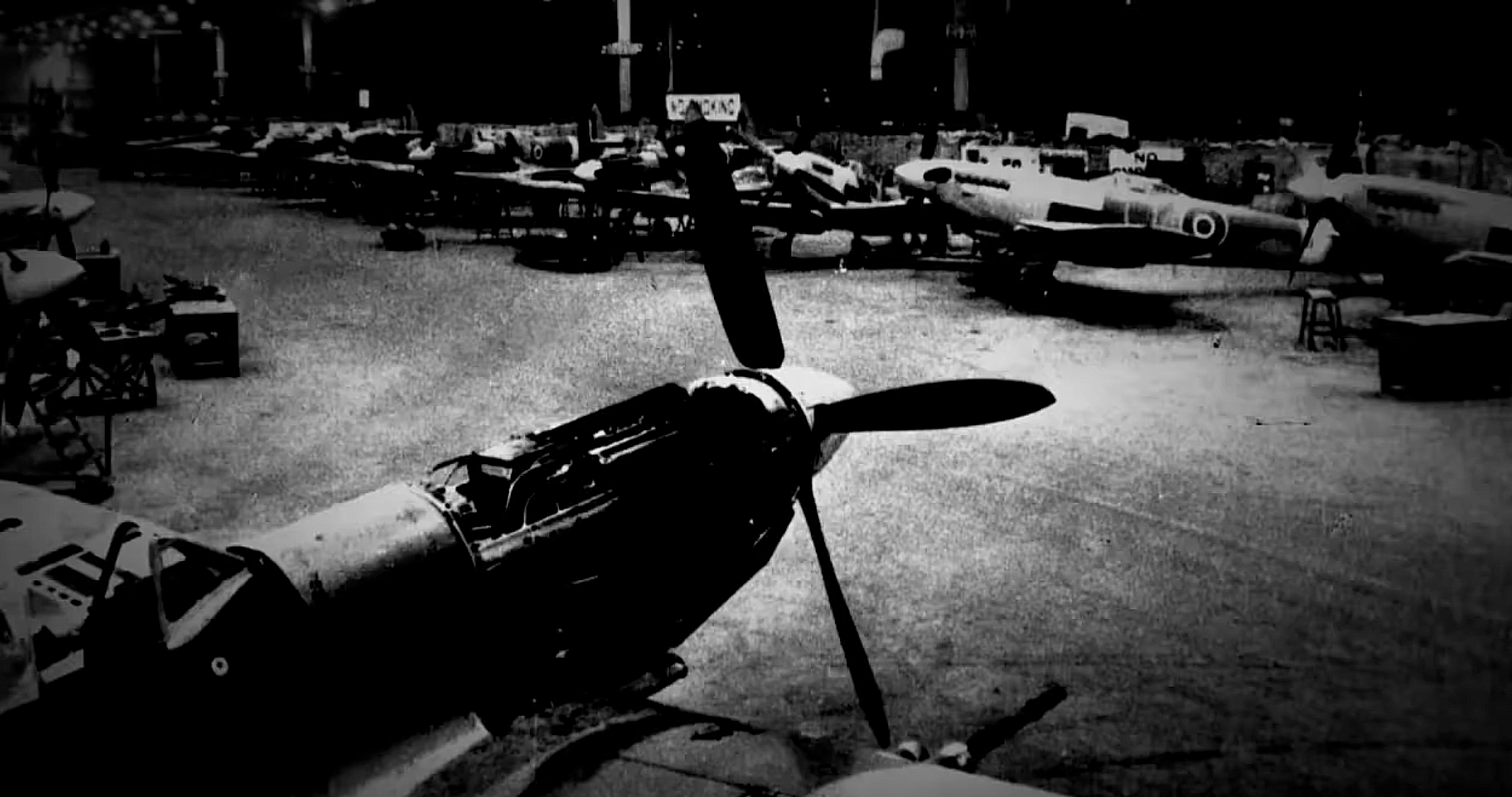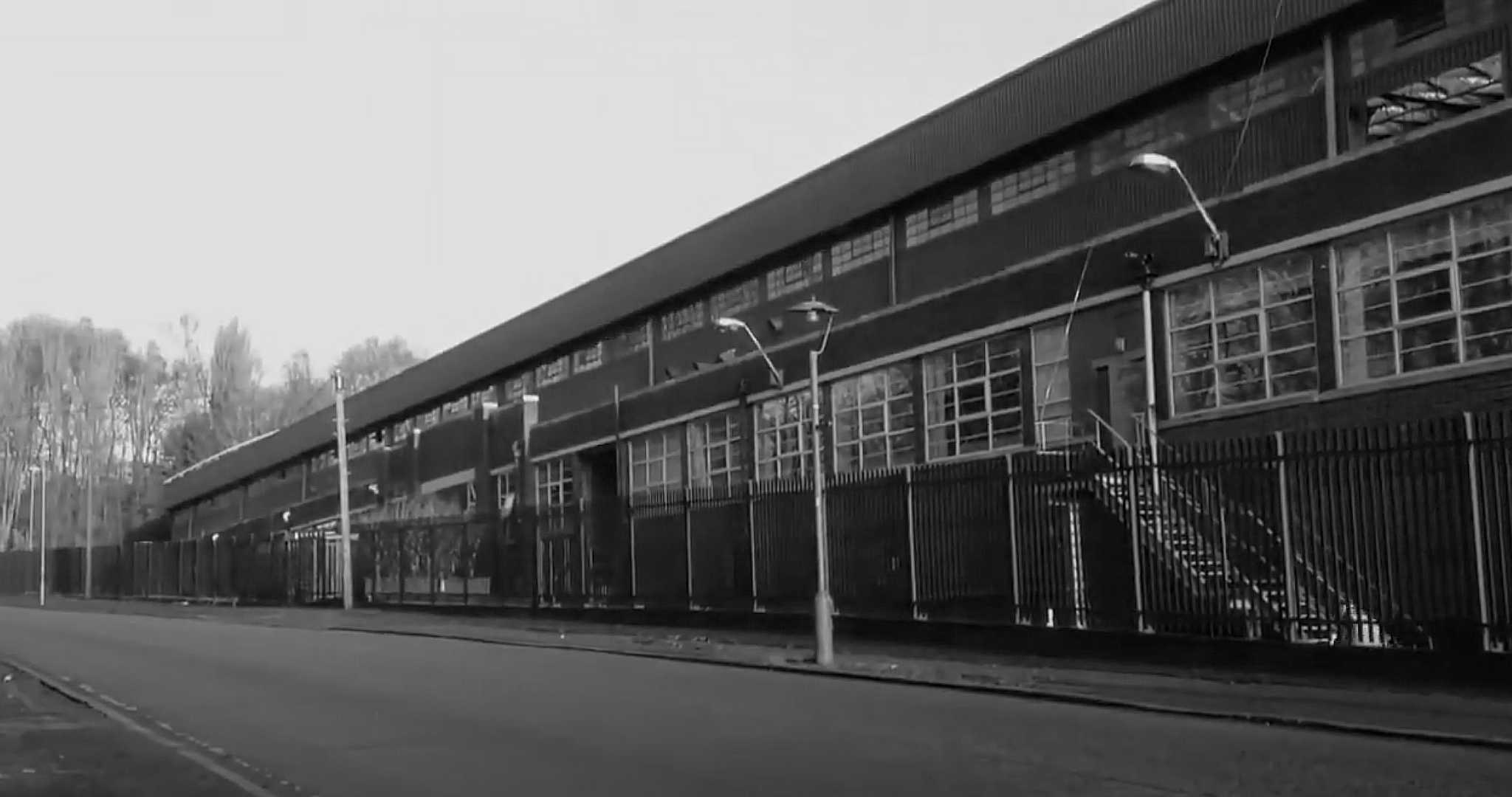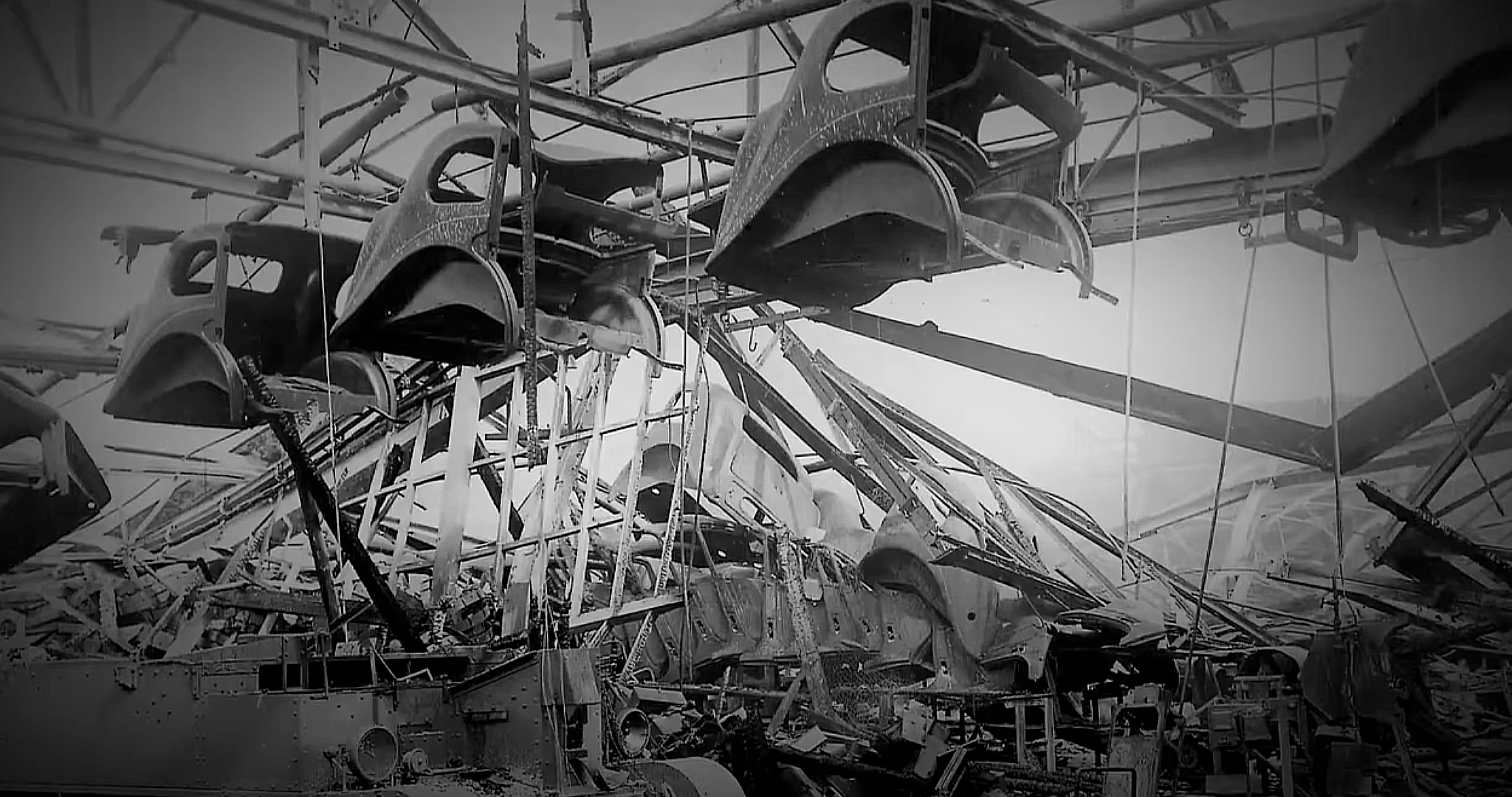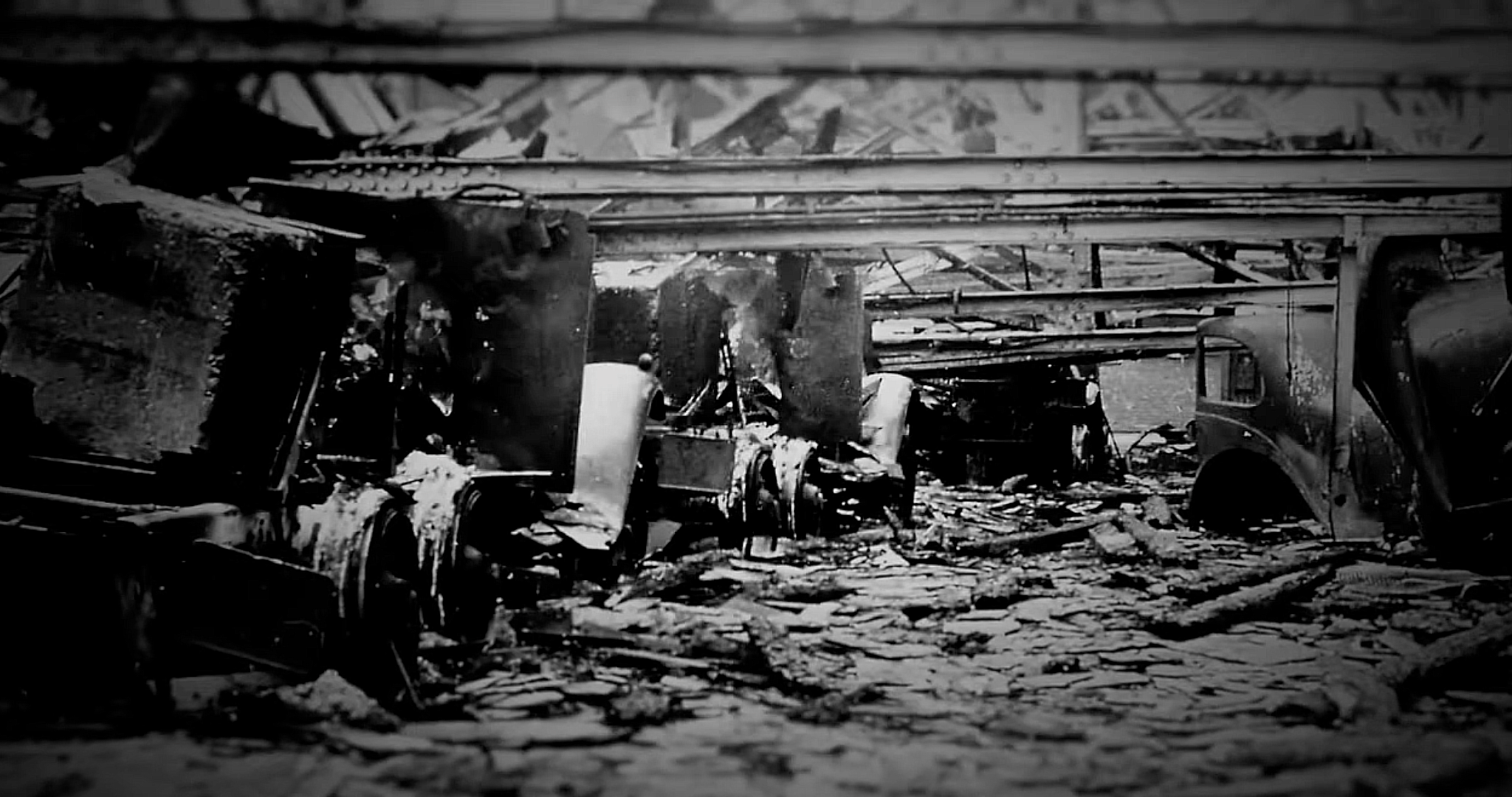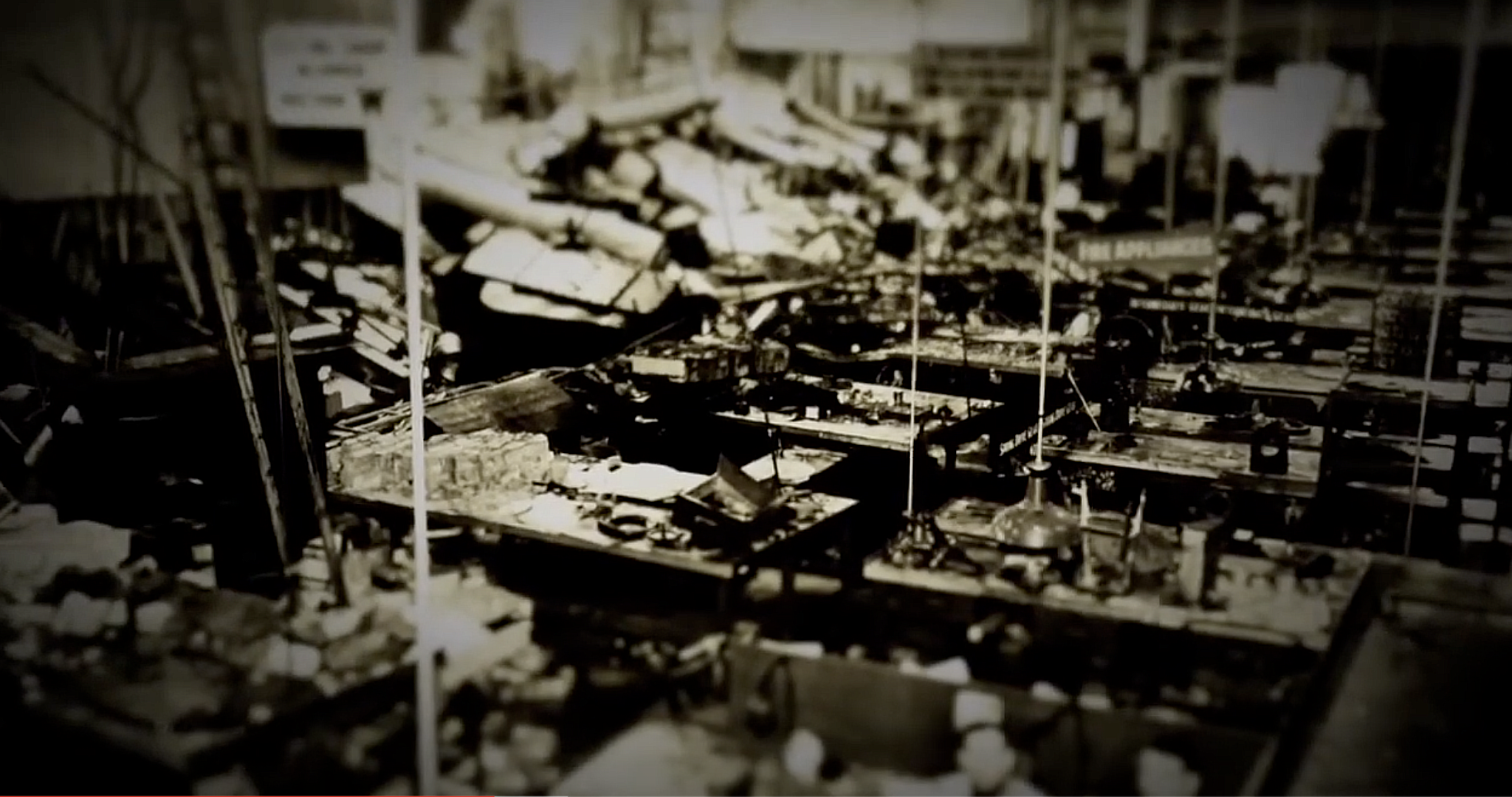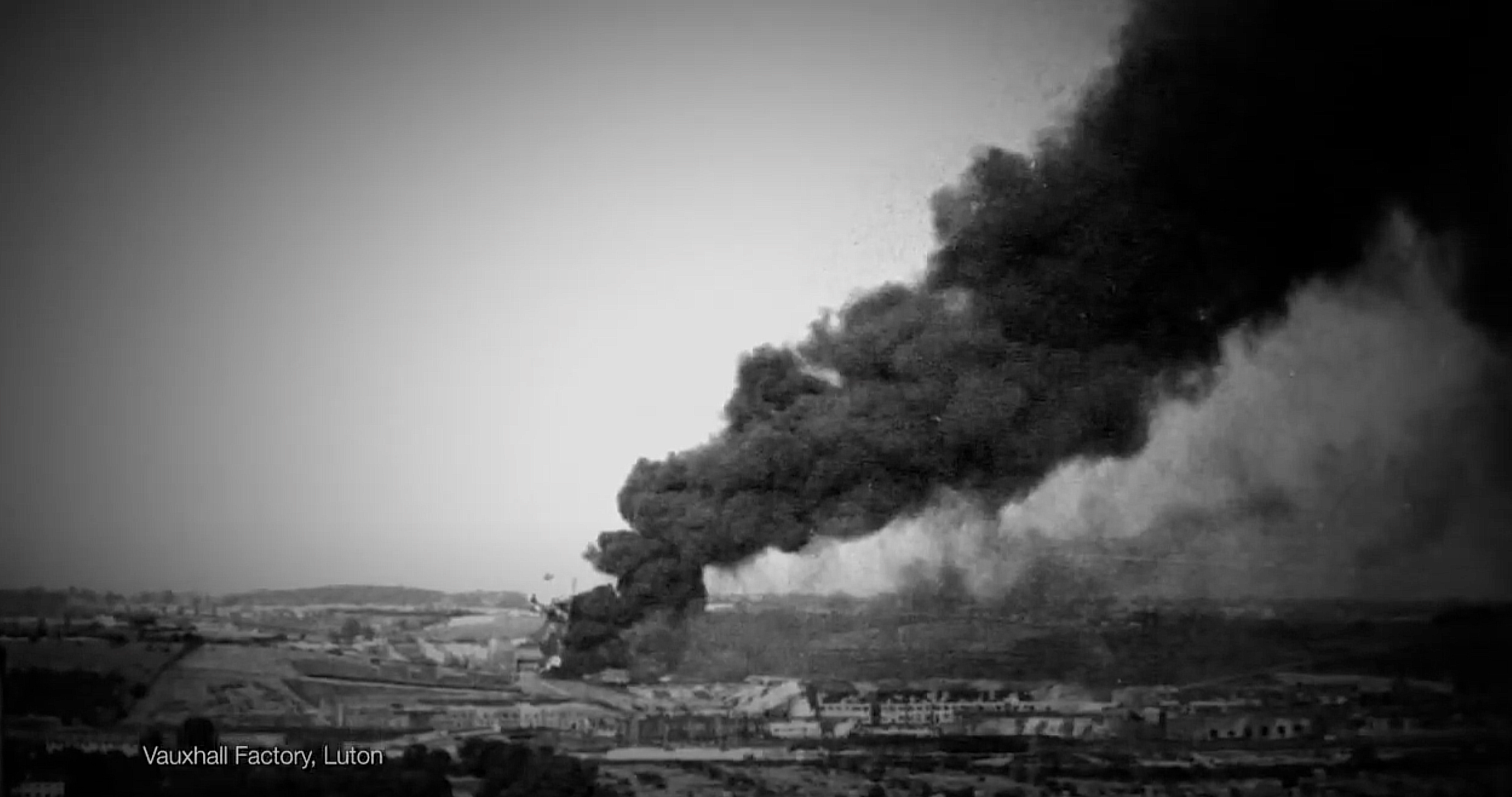Shadow Factories study
|
|
[edit] FOREWORDThis article assumes:—
It tentatively concludes:—
|
[edit] INTRODUCTION
In 1949 the first volume of the official history of the British contribution to the Second World War was published by HMSO, namely:—
- 'History of the Second World War'
- (Wikipedia)
and in 1958, HMSO published a volume by William Hornby in the 'War Production' sub-series of the United Kingdom Civil Series in the official history, namely:—
In November 2014, Neil Forbes published an unofficial essay, namely:—
- 'Democracy at a Disadvantage? British Rearmament, the Shadow Factory Scheme and the Coming of War, 1936-40'
- (Forbes, Economic History Yearbook/ Jahrbuch für Wirtschaftsgeschichte, pp.49–70)
Copies of the original essay—published by Oldenbourg Wissenschaftsverlag—are held by DeGruyter where they can only be read with institutional access.
However, a PDF of the author's post-print version, incorporating any revisions agreed during the peer-review process, were deposited in the Institutional Repository for Coventry University (CURVE) in November 2015 and can be downloaded from the Academia website for 'personal non-commercial research or study, without prior permission or charge'.
Unfortunately, neither of these documents is suitable for the purpose of doing further ongoing research on the shadow factories as buildings:—
- the 448 pages of Hornby's book contain no citations; [1]
- the 22 pages of Forbe's essay contain 80 citations which are difficult to substantiate or gain access to. [2]
In contrast, Wikipedia has published a page on the subject which can be edited, namely:—
- 'British shadow factories'
- (Wikipedia)
Thus this article takes the Wikipedia page as a suitable starting point
[edit] THE BUILDINGS
According to Wikipedia:—
" [Sir Kingsley] Wood handed the overall project implementation to the Directorate of Air Ministry Factories, appointing Herbert Austin to lead the initiative (most of the facilities to be developed were alongside existing motor vehicle factories), and the technical liaison with the aircraft industry to Charles Bruce-Gardner. He also handed the delivery of the key new factory in Castle Bromwich, that was contracted to deliver 1,000 new Supermarine Spitfires to the RAF by the end of 1940, to Lord Nuffield, though in May 1940 the responsibility had to be taken from Nuffield and given to Vickers.[10]
The buildings were sheds up to 2,000 feet (610 m) long lit either by glazed roofs or "north-lit". Office accommodation was brick, and wherever possible faced a main road. These buildings were extremely adaptable and would remain part of the British industrial landscape for more than 50 years. One of the largest was Austin's Cofton Hackett, beside their Longbridge plant, started in August 1936. 1,530 feet (470 m) long and 410 feet (120 m) wide, the structure covered 20 acres (81,000 m2). Later a 15 acres (61,000 m2) airframe factory was added, then a flight shed 500 feet (150 m) by 190 feet (58 m) was attached to the airframe factory.[11]
The new factory buildings were models of efficient factory layout. They had wide, clear gangways and good lighting, and they were free of shafting and belt drives.[12] The five shadow factories in Coventry were all in production by the end of October 1937 and they were all making parts of the Bristol Mercury engine.[13] By January 1938 two of those shadow factories were producing complete airframes.[14] In July 1938 the first bomber completely built in a shadow factory (Austin's) was flown in front of Sir Kingsley Wood, Secretary of State for Air.[15] It was said eight shadow factories constructing aircraft components were in production in or near Coventry in February 1940.[16]
As the scheme progressed, and after the death of Austin in 1941, the Directorate of Air Ministry Factories, under the auspices of the Ministry of Aircraft Production (MAP), gradually took charge of the construction of the buildings required for aircraft production. In early 1943 the functions of the directorate of Air Ministry Factories were transferred to the Ministry of Works."
NOTE:— The citations and hyperlinks have been left in this extract to highlight the opportunities and difficulties of adopting the Wiki format.
The proposed distribution of shadow factories is outlined below in the Table 1.
|
• Table 1: Timeline indicating the development of the shadow scheme.
[edit] PHOTOGRAPHS
In 2013 Dave Mitchell released a film entitled 'The Shadow Scheme'. It included a selection of digitized photographs of shadow factories from the archives of The Coventry Transport Museum, some of which are shown below in Table 2.
|
• Table 2: Photographs of some of the main shadow factories.
[edit] RESULTING WAR DAMAGE
The validity of the resulting shadow factories was thrown into question by:—
- the location of shadow factories;
- the extent of the damage.
|
• Table 3: Photographs indicating the extent of the damage to shadow factories.
[edit] TRANSCRIPT
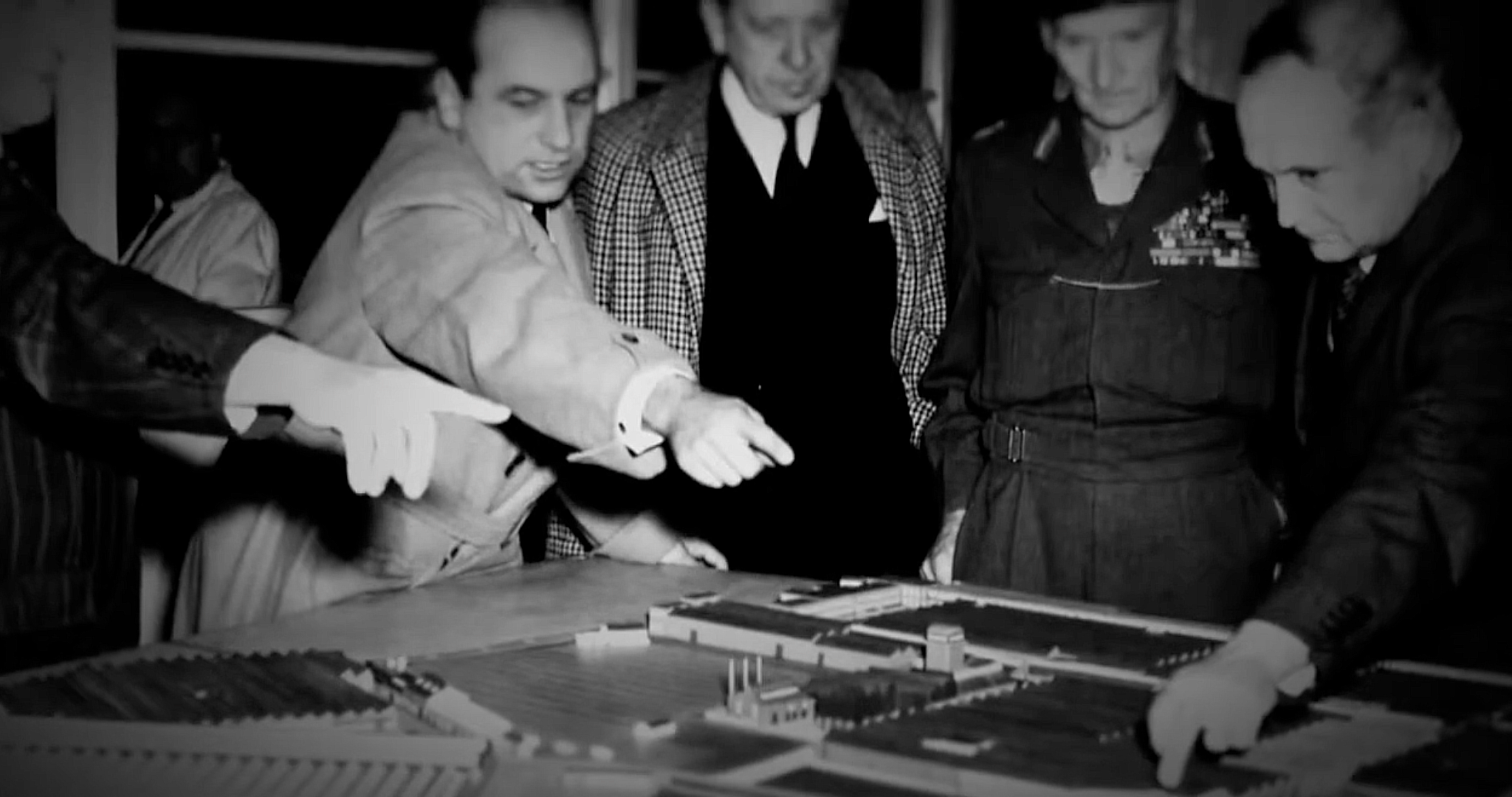
|
• Photograph showing planners discussing plans for Ryton
- "The second group - the so-called No. 2 Group - that was built then in conjunction with the Coventry-based manufacturers.
- Here the decision was taken to locate outside of the city centre so the classic example if you like is the Ryton plant built by Rootes about two to two to three miles outside of the city centre to the south of Coventry, actually outside of the city limits.
- This then, of course, raises questions about the the local infrastructure. You have to, you can't simply create a big new factory without therefore laying in road systems, water systems, electricity systems , sanitation...
- All of this info is involved. You then, in a sense ,create an entirely new set of problems...
- ...and what about the workers?
- Where are workers going to live?
- There are schemes initially - when the No.2 the group is launched in '37 to '38 - to build a whole new set of houses outside of Coventry to house the the migrant workers.
- The vastly expanded worker population that is in village - to construct and to work in these factories.
- It's quickly realized that there aren't actually the resources to do this and so what happens is you get hostels being established to house this influx this massive influx of workers.
[edit] CONCLUSION
This article concludes:—
- ... that the shadow scheme was an imperfect example of how to establish a regional and national distribution of shadow factories.
It also concludes:—
- ... that a comprehensive study of the shadow scheme and the resulting shadow factories is hampered by the protocols of writing official historical accounts of government actions and the means of access to and dissemination of research and its validation.
[edit] Citations
- For a recent, authoritative study see, J. Maiolo, Cry Havoc. The Arms Race and the Second World War, 1931-1941, London 2011, pp. 142 f.
- See, for example, R.J. Overy, Why the Allies Won, London 1996, p. 12.
- D. Edgerton, Britain’s War Machine. Weapons, Resources and Experts in the Second World War, London 2011, pp. 1-7.
- R.J. Overy, War and Economy in the Third Reich, Oxford 1994, p. 347.
- J. Cullen/P. Fishback, Did Big Government’s Largesse Help the Locals? The Implications of WWII Spending for Local Economic Activity, 1939-1958 (Working Paper NBER W12801, 2006), p. 8.
- See, for example, J. Scherner, Nazi Germany’s Preparation for War. Evidence from Revised Industrial Investment Series, in: European Economic History Review 14, 2010, pp. 433-468, here p. 457; also, Overy, War and Economy, p. 245. Overy concentrates on state-owned and state-operated firms like the Reichswerke Hermann Göring. See also, A. Tooze, The Wages of Destruction: The Making and Break- ing of the Nazi Economy, London 2006, p. 213. Tooze claims that the building-up of excess capacity in German peacetime armament production meant that war had to be contemplated not as an option but rather as an unavoidable economic consequence.
- J. Scherner, Investment Contracts between State Agencies and Industry in the Third Reich, in: C. Buchheim (Ed.), German Industry in the Nazi Period, Stuttgart 2008, pp. 117-131.
- For many historical examples that confirm this view see J. Scherner, Die Logik der Industriepolitik im Dritten Reich. Die Investitionen in die Autarkie- und Rüstungsindustrie und ihre staatliche Förderung, Stuttgart 2008.
- See B. Hopmann, Von der MONTAN zur Industrieverwaltungsgesellschaft (IVG) 1916-1951. Stuttgart 1996, p. 111, 117.
- Ibid., pp. 71-76.
- University of Glasgow Archive Services, William Douglas Weir collection (hereafter UG), GB0248 DC96/21/3, letter from Secretary, CID, to Weir, 14 Dec.1933; GB0248 DC96/21/4, memos dated, respectively, 13 Feb. and 26 March 1934.
- Churchill Archives Centre, Cambridge, UK, Lord Weir Papers (hereafter CAC, Weir), Weir 19/1, letter, 20 May 1935, from Lord Londonderry (Secretary of State for Air) to Weir. Londonderry, referring to the great problems facing them, wrote: “Your name carries such weight and inspires such confidence in the country […]”.
- Quoted in, R.P. Shay, British Rearmament in the Thirties: Politics and Profits, Princeton 1977, p. 94; see also, W.J. Reader, Architect of Air Power: The Life of the First Viscount Weir of Eastwood 1877-1959, London 1968.
- W. Hornby, Factories and Plant. History of the Second World War, London 1958, p. 24.
- D. Edgerton, Technical Innovation, Industrial Capacity and Efficiency. Public Ownership and the British Military Aircraft Industry, in: Business History 26, 1984, pp. 247-279 (here pp. 256 f.).
- D. Edgerton, England and the Aeroplane: an Essay on a Militant and Technological Nation, Basingstoke 1991, p. 75.
- H. Penrose, British Aviation: the Ominous Skies 1935-1939, London 1980, p. 175.
- CAC, Weir 19/2, note by Weir, 10 June 1936, “Acceleration of defence measures”. This note was drawn up after consulting Sir Thomas Inskip, the newly-appointed Minister for Co-ordination of Defence, and was circulated among ministries.
- CAC, Weir, 19/12, minute, 22 Aug. 1935, Weir to P. Cunliffe-Lister, (created Viscount Swinton), Secretary of State for Air. In correspondence with Churchill, Cunliffe-Lister described Weir as “an absolute God-send”.
- CAC, Weir, 19/2, minute, 30 Jan. 1936, Weir to Secretary of State.
- Weir 19/12, letter, 6 May 1936, Churchill to Weir. For a fuller analysis see, Maiolo, Cry Havoc, pp. 157 f.
- CAC, Weir, 19/2, minutes of C.I.D. meeting, 19 Nov. 1936.
- CAC, Weir, 19/18, note for talk with Secretary of State on 15 March 1938.
- See R.A.C. Parker, Struggle for Survival. The History of the Second World War, Oxford 1989, p. 50; G.C. Peden, British Rearmament and the Treasury, 1932-1939, Edinburgh 1979, p. 160; W.K. Hancock/M.M. Gowing, British War Economy. History of the Second World War, London 1949, p. 66; M. Smith, British Air Strategy between the Wars, Oxford 1984.
- G. Stone, Rearmament, War and the Bristol Aeroplane Company, 1935-1945, in: C. Harvey/J. Press (Eds.), Studies in the Business History of Bristol, Bristol 1988, pp. 187-212; P.Fearon, Aircraft Manufacturing, in: N.K. Buxton/D.H. Aldcroft (Eds.), British Industry between the Wars. Instability and Industrial Development 1919-1939, London 1982, pp. 216-240.
- The National Archives, Kew, UK (hereafter TNA), WO 32/3593, ‘British and German Aircraft Industries’, note for the Committee of Imperial Defence, 29 April 1935.
- UG, GB0248 DC96/21/3, letters, Rothermere to Weir, 15 March 1936, and Handley Page to Weir, 8 May 1936.
- I. Lloyd, Rolls-Royce. The Years of Endeavour, London 1978, p. 171.
- UG, GB0248 DC96/21/3, letter, Hankey to Weir, 28 Dec. 1935.
- Ibid., letter, Chamberlain (Westbourne, Edgbaston) to Weir, 9 Jan. 1936.
- B.J.C. McKercher, Deterrence and the European Balance of Power. The Field Force and British Grand Strategy, 1934-1938, in: English Historical Review 123, 500, 2008, pp. 98-131.
- CAC, Weir19/5, Defence Requirements Committee Paper, DC (M)(32) 138, April 1935, ‘British andGerman Aircraft Industries’.
- CAC, Weir 19/2, Note on Rearmament, 11 June 1935. Weir believed that the aircraft industry wasstrong enough, at least, to construct airframes and that it wasn’t necessary to encourage large shipbuilding firms, like Harland & Wolff, to enter the industry.
- CAC, Weir 19/1, letter, 7 Jan. 1936, Bullock (Air Ministry) to Weir, enclosing a copy of a memo to the Secretary of State.
- Ibid., letter, 12 June 1935, B.E. Holloway (Air Ministry) to Weir.
- Stone, Rearmament, p. 202.
- P. Inman, Labour in the Munitions Industries. History of the Second World War, London 1957, pp. 22-29, 320 f.
- TNA, AIR 2/1738; AIR 2/1821, letter, B.E. Holloway (Air Ministry) to Sir Thomas Barnes (Treasury Solicitor), 22 July 1936. Morris (Nuffield Organisation) took over the management of the Castle Bromwich Spitfire works in 1938.
- TNA, AIR 6/45, note of meeting at the Air Ministry between Swinton, Weir and the motor manufacturers, 7 April 1936; also AIR 2/1822, note of meeting at the Air Ministry between Swinton and the manufacturers leading the scheme, 31 May 1937.
- TNA, AIR 2/2325, minute by Swinton, 16 Aug. 1936.
- TNA, AIR 2/2324, letter, 28 Sept.1937 from Daimler to Capt. Davies, Air Ministry; minute, 7 Feb. 1938, by Treasury Solicitor.
- M. Overesch, Bosch in Hildesheim 1937-1945, Göttingen 2008, pp. 40-95.
- See J. Scherner/J. Streb, Wissenstransfer, Lerneffekte oder Kapazitätsausbau? Die Ursachen des Wachs-tums der Arbeitsproduktivität in den Werken der Deutschen Sprengchemie GmbH, 1937 bis 1943, in: Zeitschrift für Unternehmensgeschichte, 53, 2008, pp. 100-122.
- W.K. Wark, The Ultimate Enemy. British Intelligence and Nazi Germany 1833-1939, Oxford 1986, pp. 65, 163.
- J. Glancey, Spitfire. The Biography, London 2006, p. 38.
- TNA, CAB 64/17, Report (Part II), by A.H.R. Fedden, of second visit to Germany, 2-12 Sept. 1937.
- CAC, Weir 19/19, minute, 17 June 1935, Bullock to Secretary of State.
- CAC, Weir 19/15, Notes of 32nd Progress Meeting, 13 March 1936.
- For background on the schemes see, D. Thoms, War, Industry and Society: the Midlands, 1939-45, London 1989.
- CAC, Weir 19/2, Note to Air Member Supply & Organisation, 11 Sept. 1936. See also, TNA.
- CAC, Weir 19/9, Note of Progress Meeting, 17 Dec. 1937.
- C. Dobinson, AA Command. Britain's Anti-Aircraft Defences of World War II, London 2001, p. 271.
- TNA, AIR 2/1842, minutes 9 Dec. 1940.
- A. Shenfield/F.P. Sargant, The Economies and Diseconomies of Industrial Concentration. The Wartime Experience of Coventry, in: Review of Economic Studies 12/2, 1944-45, pp. 96 f.
- See Overesch, Bosch in Hildesheim, p. 53.
- TNA, CAB 21/662. The first meeting took place at the Ministry of Labour on 9 Feb. 1937.
- TNA, AIR 2/1822, notes by E.W. Hines (Rolls Royce), 21 & 23 April 1938. After the Second World War, Crewe became the production centre for Bentley cars - now in the ownership of Volkswagen AG.
- TNA, AIR2/3304, Notes of meeting – Air Council Committee of Supply, 5 May 1938.
- Ibid., letter, 18 Nov. 1938, Surveyor’s Office, County Borough of Stockport, to E .H. Williams, Lands Officer, Air Ministry, and note by latter, 23 November 1938. The site purchased was that occupied by the Crossley Brothers Works, Heaton Chapel.
- TNA, AIR 2/1842, statement by residents to the council, 28 Oct. 1937 and letter, 2 Nov. 1937, from Town Clerk to Director of Works, Air Ministry.
- Herbert Art Gallery & Museum, Coventry, UK, Town Clerk’s files (hereafter HAGM), CCA/3/1/7601/1-4, letter, Residents Association to Councillor Myers, 22 June 1939.
- Ibid., letter, Coventry City Council to Capt. Strickland MP, 28 June 1939.
- Green Belts were not formally recognised as part of a national legislative framework until 1955.
- HAGM, CCA/3/1/7604/1-16, Synopsis, statement by the Town Planning and Buildings Committee, 10 July 1939.
- For a discussion see N. Tiratsoo, Reconstruction, Affluence and Labour Politics. Coventry 1945-60, London 1990.
- HAGM, CCA/3/1/7601/1-4, letter, 15 Nov. 1939, Col. J.A. Cole (Rootes Securities Ltd) to Town Clerk, Coventry.
- HAGM, CCA/3/1/7604/1-16, Coventry City Council, notes, 7 Dec. 1939.
- HAGM, CCA/3/1/7601/1-4, letter, Strickland to Elliot, 12 Dec. 1939; memo, Ministry of Health, 5 Jan. 1940.
- HAGM, CCA/3/1/7606, letter, 11 March 1940, to Sir John Nixon (Midlands representative for the Air Ministry) from the Policy Advisory Committee, Coventry City Council.
- See, Overesch, Bosch in Hildesheim, pp. 164-166.
- For more details see Scherner/Streb, Wissenstransfer, Lerneffekte oder Kapazitätsausbau, pp. 100-122.
- Lloyd, Rolls-Royce, p. 150; J. Zeitlin, Flexibility and Mass Production at War. Aircraft Manufacture in Britain, the United States, and Germany, 1939-1945, in: Technology and Culture 36/1, 1995, pp. 46-79.
- Shenfield/Sargant, The Economies and Diseconomies, pp. 79-99.
- Horrnby, Factories and Plant, p. 255.
- S. Ritchie, Industry and Air Power. The Expansion of British Aircraft Production, 1935-41, London 1997, p. 59.
- Hornby, Factories and Plant, p. 254.
- Zeitlin, Flexibility and Mass Production, pp. 50 f.; Penrose, British Aviation, p. 178.
- Stone, Rearmament, p. 194.
- R. Croucher, Engineers at War 1939-1945, London 1982, pp. 77 f.
- TNA, AVIA 15/853, copy letter, John (Jay) Llewellin to Sir Andrew Duncan, 19 May 1942.
[edit] Notes
[1] According to Wikipedia:—
- "The works published before 1970 lack references to unpublished sources until government archives were opened, to an extent, by the Public Records Act 1958 and the Public Records Act 1967. The works were published with only references to published sources because British constitutional conventions on the anonymity of government officials and ministers were followed, leading to a somewhat detached narrative style in some cases."
- (Wikipedia, with reference to the works published in the History of the Second World War)
[2]
- "Copyright © and Moral Rights are retained by the author(s) and/ or other copyright owners. A copy can be downloaded for personal non-commercial research or study, without prior permission or charge. This item cannot be reproduced or quoted extensively from without first obtaining permission in writing from the copyright holder(s). The content must not be changed in any way or sold commercially in any format or medium without the formal permission of the copyright holders."
- (Forbes)
[edit] References
Forbes, N. (2014) 'Democracy at a Disadvantage? British Rearmament, the Shadow Factory Scheme and the Coming of War, 1936-40', Walter de Gruyter GmbH.
Hornby, W. (1958) 'Factories and Plant', HMSO. (also at https://archive.org/details/factories-plant but temporarily offline at the time of writing)
Mitchell, D (2013) 'The Shadow Scheme', YouTube.
[edit] Further reading
Thoms D. (1989) 'War, Industry and Society: the Midlands, 1939-45', Routledge.
[edit] External links
Featured articles and news
Grenfell Tower Principal Contractor Award notice
Tower repair and maintenance contractor announced as demolition contractor.
Passivhaus social homes benefit from heat pump service
Sixteen new homes designed and built to achieve Passivhaus constructed in Dumfries & Galloway.
CABE Publishes Results of 2025 Building Control Survey
Concern over lack of understanding of how roles have changed since the introduction of the BSA 2022.
British Architectural Sculpture 1851-1951
A rich heritage of decorative and figurative sculpture. Book review.
A programme to tackle the lack of diversity.
Independent Building Control review panel
Five members of the newly established, Grenfell Tower Inquiry recommended, panel appointed.
Welsh Recharging Electrical Skills Charter progresses
ECA progressing on the ‘asks’ of the Recharging Electrical Skills Charter at the Senedd in Wales.
A brief history from 1890s to 2020s.
CIOB and CORBON combine forces
To elevate professional standards in Nigeria’s construction industry.
Amendment to the GB Energy Bill welcomed by ECA
Move prevents nationally-owned energy company from investing in solar panels produced by modern slavery.
Gregor Harvie argues that AI is state-sanctioned theft of IP.
Heat pumps, vehicle chargers and heating appliances must be sold with smart functionality.
Experimental AI housing target help for councils
Experimental AI could help councils meet housing targets by digitising records.
New-style degrees set for reformed ARB accreditation
Following the ARB Tomorrow's Architects competency outcomes for Architects.
BSRIA Occupant Wellbeing survey BOW
Occupant satisfaction and wellbeing tool inc. physical environment, indoor facilities, functionality and accessibility.
Preserving, waterproofing and decorating buildings.







